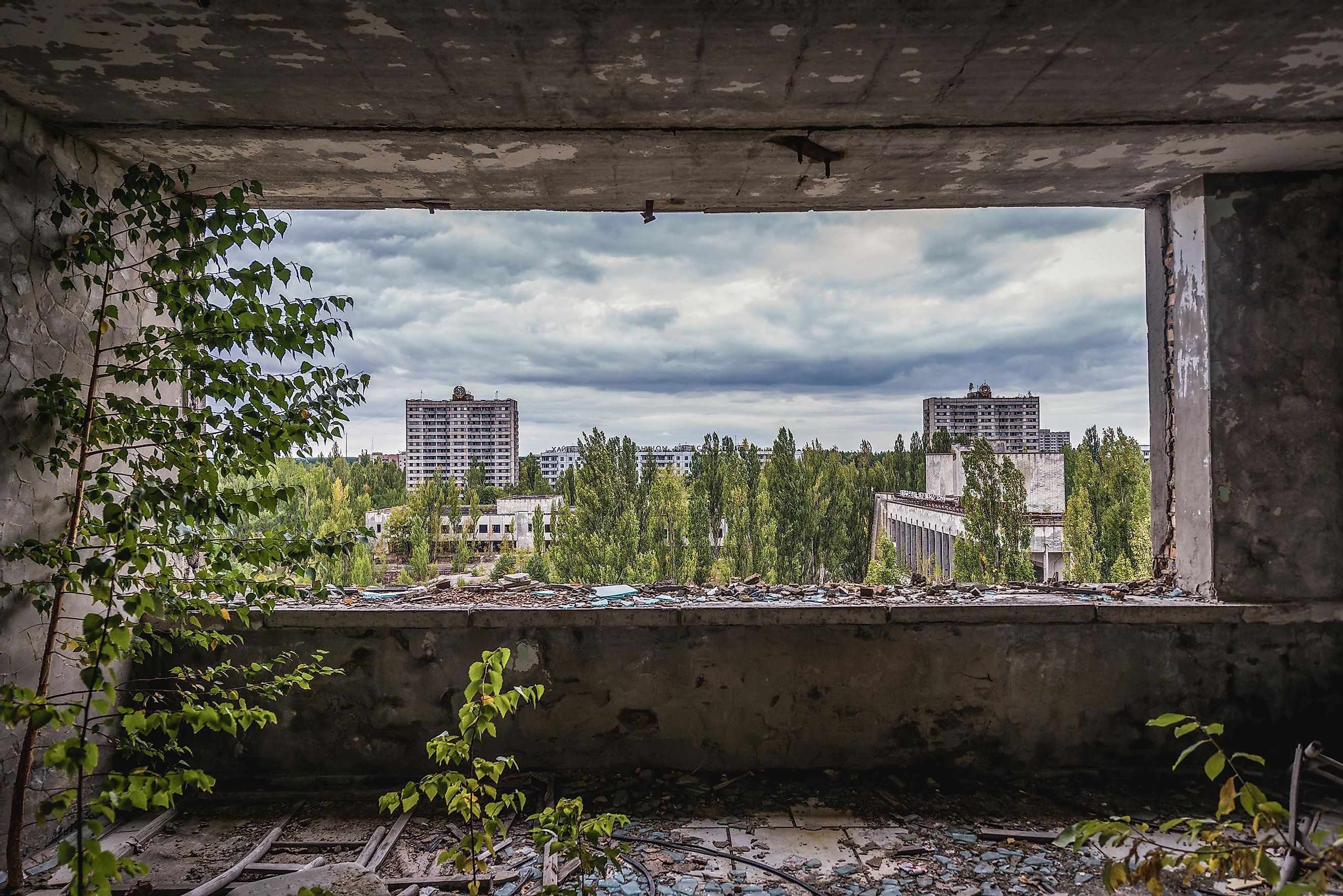
What Does Chernobyl Look Like Today?
Under a clear sky, during the latter hours of April 26, 1986, an event occurred that was deemed unthinkable.
The Chernobyl Nuclear Power Plant experienced a disastrous accident, forever changing global perceptions towards nuclear power.
In Ukraine, this plant featured the Soviet-engineered RBMK-1000 reactor unit. In the USSR, steadfast faith existed about the unit's design's durability, and authorities primarily brushed any associated risks under the carpet.
This trust held by both Soviet administrators along with the management team running the Chernobyl facility blinded them regarding safety measures, paving the way for further oversight.
During a routine test, disaster struck.
The moment the fourth reactor exploded, it altered the destiny of Ukraine, Russia, Europe, and indeed, the entire globe.
The aftermath was an emission that equated to nearly ten times what Hiroshima had faced in terms of radiation.
Almost 40 years later, the site of Chernobyl stands frozen in time. The abandoned buildings and empty roads inside the Exclusion Zone reflect the human cost and environmental impact of one of the worst nuclear disasters in history.
The Genesis of Chernobyl: From Inception to Disaster
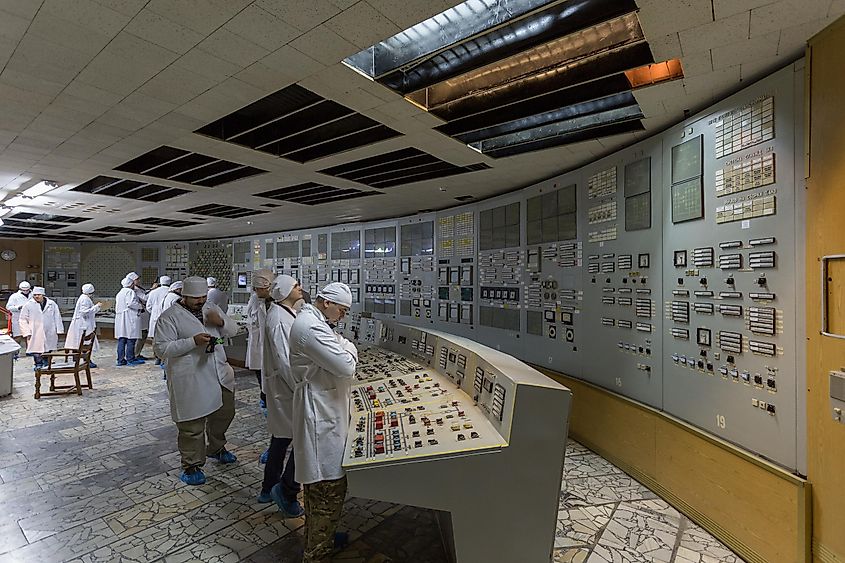
In 1977, work to build the plant began. The site of Chernobyl lies close to the Belarus border, about 10 miles away.
The town of Pripyat was built roughly one and a half miles away to house workers, along with their families. When the disaster struck, it had close to fifty thousand inhabitants.
Given the escalating need for power supply, the Soviet Union had steered towards harnessing nuclear energy. With their ability to generate substantial electricity, the reactors were chosen as an affordable means for meeting the Soviet Union's increasing energy needs.
They had other uses instead of just creating power. Multifaceted in nature, each RBMK reactor was capable of producing electrical power and yielded weapons-grade plutonium as leftover waste. The construction timeline saw Units 1 and 2 erected between 1970-77, while Units 3 and four completed by year-end of '83.
The 1986 Chernobyl Disaster
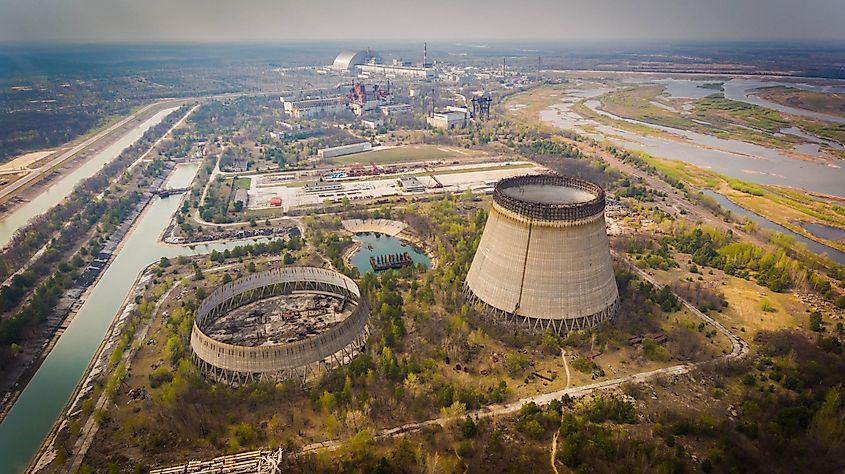
Aerial view of Chernobyl nuclear reactors with surrounding canals in spring.
Workers at the Chernobyl plant were doing a maintenance check when the unthinkable happened.
During a safety test, the reactor's power dropped dangerously low. Operators tried to increase power to counteract this, but a sudden surge occurred.
Due to a design flaw in the RBMK reactor type used at Chernobyl, a positive void coefficient existed, meaning that as the coolant (in this case, water) turned to steam, it increased the reactivity of the reactor, causing an uncontrolled power increase.
A massive explosion blew off the reactor's lid, releasing radioactive material into the atmosphere.
The immediate impact caused the deaths of two plant workers. Records show 29 more died within weeks due to acute radiation sickness. Some estimates put the death toll as high as 50.
Radiation inflicted the region, leading to thousands being forced to evacuate and relocate. The entire town of Pripyat was evacuated 36 hours after the incident occurred. Over time, 67,000 more people in the surrounding areas were evacuated. In the aftermath, approximately 335,000 people were relocated and resettled.
The Soviets tried to cover up the disaster, but the secret was out after Sweden started to pick up high levels of radiation.
Over time, the radiation released surpassed the radioactivity of both the Hiroshima and Nagasaki bombings. The contamination extended throughout Europe, impacting countless acres of terrain.
According to research by the International Agency for Research on Cancer, published in the International Journal of Cancer, "Chernobyl may have caused about 1,000 cases of thyroid cancer and 4,000 cases of other cancers in Europe."
Predictive models also indicate that by 2065, instances of thyroid cancer could reach 16,000, and other forms of cancers caused due to Chernobyl radiation might tally up to 25,000.
The incident exposed flaws in Soviet reactor design, leading to increased scrutiny and opposition to nuclear plants. Over time, Chernobyl's Units 2 and 3 were decommissioned, marking a significant turning point in nuclear power perception. The last unit was finally decommissioned in 2000.
Chernobyl's Dark Tourism: Exploring a Tragic Legacy
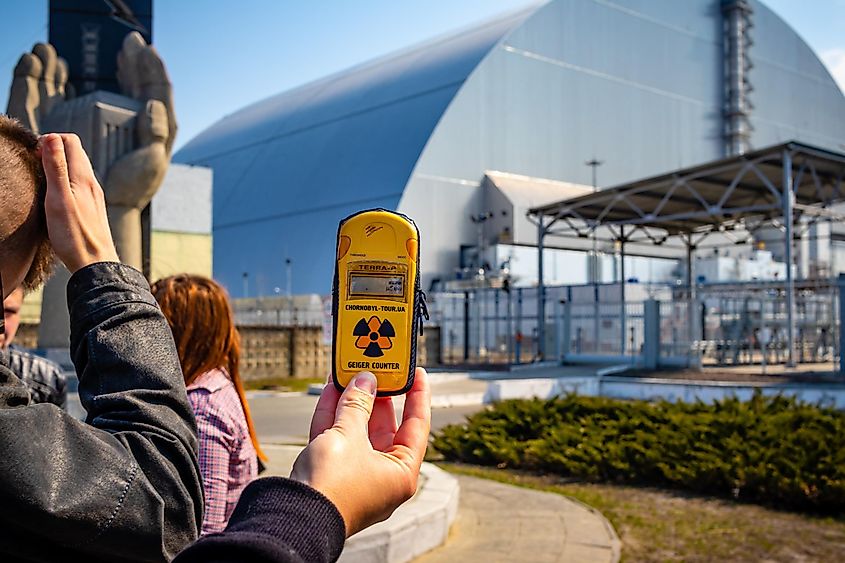
Tourists with a Geiger Counter stand in front of the New Safe Confinement arch over disaster reactor number 4 in Chernobyl, Ukraine.
Initially, the Exclusion Zone was a circle with a radius of 18.6 miles but was later enlarged to encompass an area measuring 1,017 square miles surrounding the Chernobyl Nuclear Plant.
After witnessing the disintegration of the Soviet Union in 1991, authority over the plant was handed to Ukraine. Twenty years later, the Ukrainian government started to open up parts of the area to tour groups.
The world of dark tourism moved its way into the CEZ, attracting visitors intrigued by the tragic history and eerie atmosphere.
Tours take people near villages, past abandoned bulldozers, and the empty forests of the area. Even today, there are areas with dangerously high levels of radiation. One of those areas called the Red Forest, has radiation levels that equal the radiation found at the explosion site.
Depending on what tour visitors take, you can get as close to 300 meters from the concrete sarcophagus covering the exploded unit. The catch is tourists can only stay there for mere minutes. Radiation in the area is 20 times higher than normal levels.
Before Russia's full-blown attack on Ukraine, business was booming.
With the easing of COVID restrictions, visitor numbers to the area had begun to increase. During October 2021, nearly 15,000 individuals explored the CEZ, propelling the visitor count for that year's initial ten months to a staggering figure of 62,000,
In her book, 'Tourism and Heritage in the Chernobyl Exclusion Zone' Magdalena Banaszkiewicz argues that even disasters are a part of a people's history. Tourism can help save the area but can also be a threat.
Her book argues and emphasizes that sites affected by disasters, like Chernobyl, offer valuable lessons on the significance of safeguarding both cultural and natural heritage for future generations.
The trick is doing it sustainably. As we'll see, while humans no longer live in the area, animals have returned to thrive.
Nature's Reclamation: Wildlife in the Chernobyl Exclusion Zone
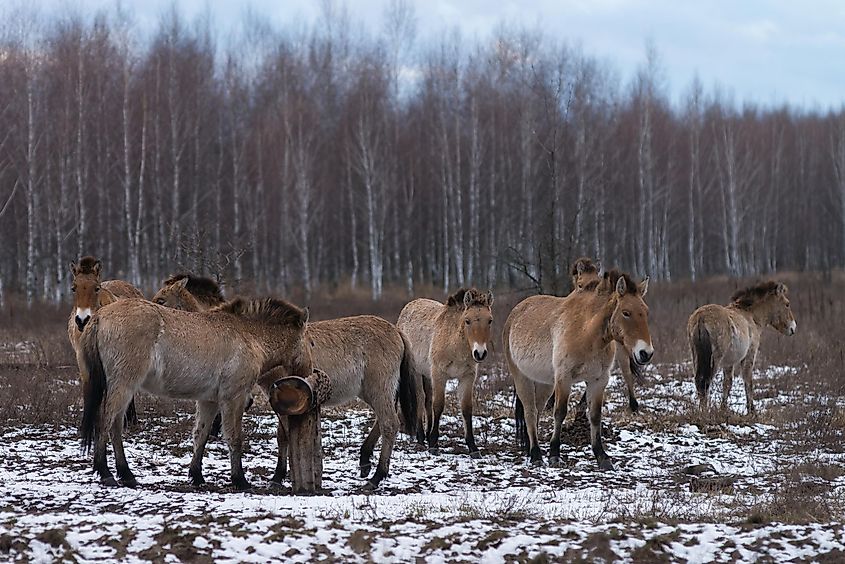
Wild horses in the winter season of the Chernobyl Exclusion Zone, Ukraine.
The landscape near Chernobyl, affected by significant radiation, isn't what some people expect.
Without humans, the CEZ has transformed into a haven for various species. The United Nations Environment Programme reports that animals such as lynx, bison, and deer have made their home in this region. At the same time, boars and bears are also flourishing.
The CEZ is now the third-biggest nature reserve in mainland Europe. Efforts to preserve the biodiversity of self-reintroduced populations were initiated.
After the accident, on the Belarus side of the CEZ, there was a significant increase in wildlife populations. Both boar and elk populations began to flourish, and wolf populations also increased as they did.
Some scientists say the radiation isn't the most dangerous factor for the animals. Instead, human activity is.
As recently as 2015, research published in Current Biology Magazine said they found no evidence that radiation levels were affecting large fauna in the area. Instead, they say human activity continues to be the biggest hindrance to the recovery of ecosystems.
Others say the situation in Chernobyl is more nuanced and more complicated.
Timothy A. Mousseau from the University of South Carolina says there is insufficient evidence that animals have adapted, and even minimal radiation levels could harm populations.
In his paper's conclusion, he says many species of animals have seen a decline in population in the more radioactive areas, which lends evidence to the theory that mutations to genes can lead to extinction.
Despite these concerns, large animals in the area continue to thrive, rebounding to levels higher than before the nuclear accident.
Wild animals aren't the only ones present around Chernobyl. Around the disaster site, man's best friend remains.
After the explosion at the plant, people were evacuated, but many pets were left behind. According to research published in Science Advances, the Ukrainian Ministry of Internal Affairs culled pets that remained over fears the animals could somehow spread the radiation.
Now, dogs roam freely. One theory is pretty simple. It proposes there are still dogs around because not every animal was found and killed after the disaster. Some must have run off into the forests or hid.
In 2017, scientists noticed an explosion in the dog population. In response, the Chernobyl Dog Research Initiative was created to help humanely study animals.
The research shows two distinct groups of dogs, one around Chernobyl City and one by the plant itself. Interestingly, the study shows that dogs living in Chernobyl are "genetically distinct from other free-breeding and purebred dog populations."
Scientists aren't quite sure why this has happened.
The differences are so distinct that despite the two sites being only 10 miles apart, they are considered different populations. It's hard to say if that's because of the difference in radiation or the breeding patterns of the animals, but either way, Chernobyl has created a distinct breed of dog.
Chernobyl in Conflict: The 2022 Russian Occupation
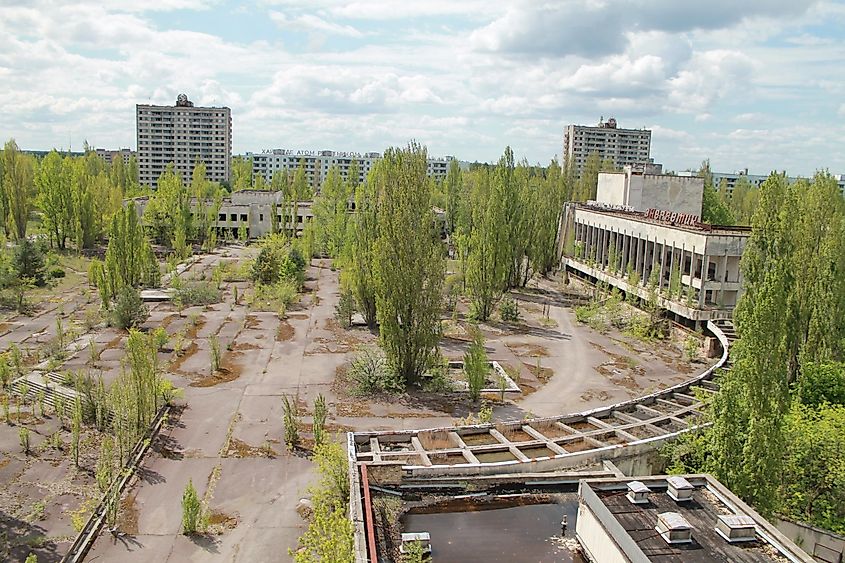
Ruins and abandonment in Pripyat, Kyiv. Editorial credit: Oleksii Konchenko / Shutterstock.com
On February 24, 2022, Europe witnessed its biggest assault since the Second World War when Russia invaded Ukraine.
The Chernobyl nuclear exclusion zone came under Russian control; their soldiers swarmed into Ukraine via both Belarus and Russia itself - making it the first-ever attack on a civilian nuclear facility during warfare.
When it happened, hundreds worked close to that area, managing and maintaining the plant after its meltdown. They were kept under Russian supervision after the invasion.
Some onlookers saw the occupation as pointless or a show of intimidation. Others saw it as a logistical target, with substantial concrete parking nearby that could be a storage location for military vehicles. With Belarus so close to the north, it couldn't be attacked from that side.
As well, with Russian troops posed to assault Kyiv, it would be an effective stop-over on the way to the capital.
Concerns were raised revolving around the potential consequences of combat on the site of a nuclear accident. Ukraine claimed the attacks on the site could lead to another ecological disaster.
In a tweet from President Volodymyr Zelenskyy on February 24, 2022, he said the attack was not only an attack on Ukraine but a "declaration of war against the whole of Europe."
The hundred remaining workers were now under the control of the Russian forces. The Russians weren't precisely careful on the site, with some reports claiming Russians rode through the highly radioactive Red Forest, causing radioactive dust to rise into the air. Several Russian soldiers were said to be sick from the radiation that came off the ground.
In a statement released by the State Nuclear Regulatory Inspectorate of Ukraine, levels of gamma radiation were higher than usual, saying it was due to topsoil layers being moved by heavy military machinery.
As the attack on Kyiv fizzled and the Russian offensive turned to other parts of Ukraine, the Russians decided to leave the site, leaving it unguarded.
In early March, the company that runs the plant, Energoatom, announced no further Russian troops were present in Chernobyl. The area once again was in the hands of Ukraine.
Chernobyl's Ongoing Saga: Lessons from a Nuclear Tragedy
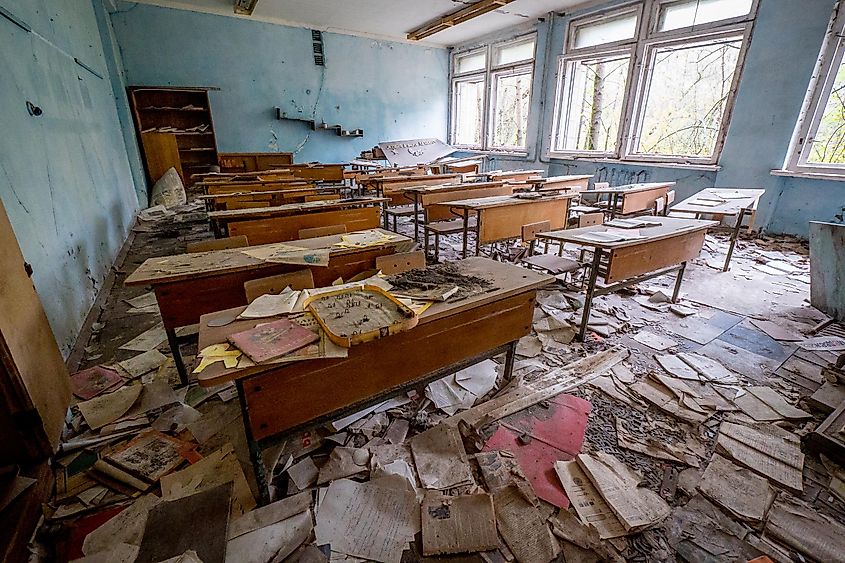
The Chernobyl disaster shows the bitter and catastrophic consequences of nuclear accidents and the imperative need for stringent safety measures and responsible management.
The explosion not only claimed immediate lives but unleashed a wave of radioactive contamination that continues to linger.
The deaths and displacement of thousands show the devastating human cost of nuclear accidents.
Over time, the CEZ, once a harsh reminder of the disaster, has become a refuge and home for animals.
Some species once thought lost to the area have reclaimed the land, showing nature's ability to thrive without man's interference.
At the same time, Chernobyl and Ukraine welcomed the world of dark tourism, as thousands of people came to visit the haunting remains of the area. That fell away on the wayside after the 2022 Russian invasion of Ukraine.
In the wake of the conflict in Ukraine, the CEZ faced a new threat when Russian forces temporarily seized control of the area.
The potential environmental risks and consequences raised concerns globally show how delicate the balance between political tensions and the lingering impact of the Chernobyl disaster is.
As the war continues to burn across Ukraine, the fate of Chernobyl remains uncertain, highlighting the ongoing challenges in safeguarding both the site's historical significance and the resilience that has developed.











